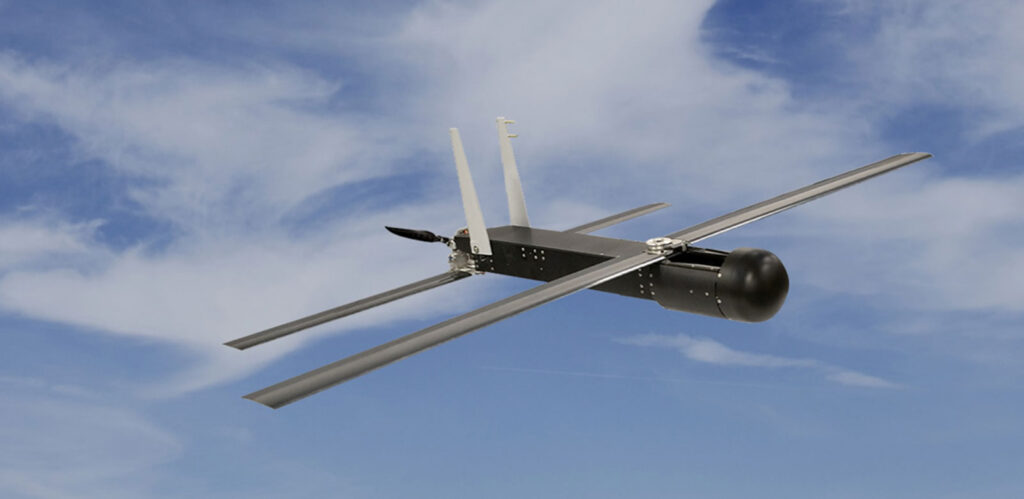SOURCE: IDRW NEWS NETWORK

Two world powers are in an intense war in attempts to grab lucrative contracts to be part of India’s multi-billion dollar nuclear submarines program without raising the eyes of the world community. Both Russia and France want to be India’s Strategic depth partner in defense technology but the race is to take each other place in terms of offering technologies that are not often traded or sold unless it is to close friends and allies.
American and United Kingdom joined hands to develop nuclear-capable attack submarines for Australia to thwart any Chinese Naval activities in Indian Ocean Region in mind, the same games are being played in the power corridors of India where both countries are eager to help India achieve the same.
Continue readingSOURCE: RAUNAK KUNDE / NEWS BEAT / IDRW.ORG

Satyanarayan Nandlal Nuwal, Chairman of Solar Industries India, in an interview, said that the company had sent proposals for developing 15 Make in India weapons systems under the Make 2 category that is essentially industry-funded projects involving design, development, and innovative solutions by Indian vendors for development of prototypes.
Nuwal confirmed that the company has been given go head to develop at least two weapons systems for the Indian Armed forces, for which funding will be coming from the company itself as it’s from the Make 2 project of around 300 cores. while it has received positive feedback and inquiries on the other 13 projects that the company is eager to work on.
Continue readingSOURCE: RAUNAK KUNDE / NEWS BEAT / IDRW.ORG
Indian Air Force (IAF) is also set to upgrade its Heron, Medium Altitude Long Endurance (MALE) unmanned aerial system (UAS) under Project Cheetah with Israeli-made Nimrod, a long-range air-to-surface missile developed by Israel Aerospace Industries that provides standoff strike ability against a variety of point targets such as armored personnel carriers (APCs), ships, bunkers, personnel concentrations, and guerrillas.
Nimrod is a long-range semi-active laser-guided anti-tank guided missile (ATGM), that has a range of from 26km to 35km to a whooping 50km depending on the variant that might be procured by the IAF.
Continue readingSOURCE: RAUNAK KUNDE / NEWS BEAT / IDRW.ORG

India has issued Notices to Airmen (NOTAM) for a launch of a missile in the Bay of Bengal for the period from 27-30 Dec 2022 as per information provided by Twitter user Damien Symon@detresfa_.
The designated area for the NOTAM is 670 to 690km in length which indicates it might be a test of the established missile system. speculation is that it might be a test of the long-range Supersonic Missile Assisted Torpedo (SMART) system that has a range of 650km.
Continue readingSOURCE: RAUNAK KUNDE / NEWS BEAT / IDRW.ORG

Satyanarayan Nandlal Nuwal, Chairman of Solar Industries India, in an interview confirmed that the company has been granted permission to manufacture a Hard kill system that will be a world first since it will be integrating both laser system and surface-to-air missile systems to take out unmanned aerial vehicles
According to Nuwal, the system will be ready in the next two years, while he said the present Hardkill solutions against drones are only Laser Directed Energy Weapon (DEW), they have opted for are taking best from the both worlds and are developing hardkill solutions that can use DEW and also quick response interceptor missiles.
Continue readingSOURCE: RAUNAK KUNDE / NEWS BEAT / IDRW.ORG

Aeronautical Development Agency (ADA) and Hindustan Aeronautics Limited (HAL) have insisted that the Indian Air Force (IAF) make plans for bulk orders for the Tejas Mk2 when it is ready for production in 2028-29 so that it can maintain high production rate riding on the bulk order that will create need to expand production line that can support 24 aircraft per year or 48 aircraft per year as per bulk order that it gets.
IAF has committed to procure six squadrons of Tejas Mk2 (108-120) but IAF in total might procure 9 to 10 squadrons (210) units. HAL plans to use the present LCA-Division facility to manufacture Tejas Mk2 aircraft when it enters production after Tejas Mk1A production closes.
Continue readingSOURCE: RAUNAK KUNDE / NEWS BEAT / IDRW.ORG

Satyanarayan Nandlal Nuwal, Chairman of Solar Industries India, that is in charge of manufacturing explosives and Pinaka Multi-Barrell Rocket Systems said in an interview confirmed that the company has been granted permission to manufacture two guided rockets that will be ready in neat 18 months to bridge the gap between Pinaka Guided (75km) and SSM (350km.
Nuwal confirmed that two guided missiles have been named Maheshwarastra 1, which will have a range of 150km, and Maheshwarastra 2, which will have a range of 290km.
Continue readingSOURCE: RAUNAK KUNDE / NEWS BEAT / IDRW.ORG

Bangalore- based NoPo Nanotechnologies is one of the few companies on the planet that produces one of the world’s strongest and smallest materials. A carbon nanotube (CNT) is a tube made of carbon with diameters typically measured in nanometers, This microscopic material is 10,000 times thinner than a single strand of human hair and has a tensile strength that is over 100 times that of steel.
The company already secured grants from Niti Aayog and even from the Indian Navy and ultimately has plans to use it for defense applications.
Continue readingSOURCE: RAUNAK KUNDE / NEWS BEAT / IDRW.ORG

Lockheed Martin’s F-16 Block 70/72 is enjoying a late-life revival due to complex issues that continue to plague fifth-generation F-35 fighter jets that its ever-increasing operational cost that has failed to come down even after repeated assurance. With steady orders coming from its current operators, Lockheed Martin is shifting its focus on India where requirements for 114 jets under MRFA Tender could extend the lifeline of the legacy jet by another 40 years.
Lockheed Martin which has tied up with Tata Advanced Systems (TASL) which is already producing F-16 wings in the country is offering the F-21, which is uniquely configured to meet or exceed all of the IAF’s Multi-Role Fighter Aircraft requirements.
Continue readingSOURCE: RAUNAK KUNDE / NEWS BEAT / IDRW.ORG

India’s P-8I fleet of multi-mission maritime patrol aircraft will feature Special Mission pontoon-like Pod that can be used for moving target indicators that can scan both water and land areas simultaneously in addition to its onboard search radar.
Americans have developed such pod based AESA radar system for their fleet but have put restrictions on its export to its current operators as it has some kind of secrecy around the technology that they want to protect, idrw.org has been told that the initial discussion between DRDO and Indian Navy has been ongoing and presently things are being worked out about the configuration and other specifications.
Continue readingSOURCE: RAUNAK KUNDE / NEWS BEAT / IDRW.ORG

India’s Prachand Light combat Helicopter as part of its evolving needs for futuristic weapons systems will be getting a tube-launched, collapsible wing, electric propulsion architecture loitering weapon that comes with multi-purpose warhead to expand Prachand’s warfighting capability and to hit hardened targets at a greater distance.
idrw.org has been told that work on long-range precision loitering munition that can hit targets beyond 35km with a 20-30kg warhead is under the initial stages of research and such precision loitering munition will be included as part of the near future upgrade weapons package of the Prachand.
Continue readingSOURCE: RAUNAK KUNDE / NEWS BEAT / IDRW.ORG
India will be placing orders for 15 more C-295 transport aircraft for the Indian Navy and Indian Coast Guard that will be fitted with special sensors and will be classified as multi-mission maritime aircraft (MMMA). Indian Navy will procure 9 and the Indian Coast Guard will get 6 MMMA aircraft that will be modified to carry Active Electronically Scanned Array Radar (AESAR)” technology and other sensors to play a key role in sea surveillance of surface ships and boats.
India already has placed orders for 56 C-295 transport aircraft for the Indian Air Force as a replacement for the aging Avro fleet. C-295 will be manufactured at the Tata-Airbus facility in Vadodara.
Continue readingSOURCE: RAUNAK KUNDE / NEWS BEAT / IDRW.ORG

According to Spanish media reports, Airbus will be delivering the first C-295 manufactured in Spain in Q3 of 2023 and deliveries will pick up from 2024 onwards and likely will be concluded in 2025 for the initial 16 units of C-295M that will be manufactured in Spain before Tata-Airbus facility starts to assemble of C-295M in the country from 2026 onwards.
India had contracted a deal to purchase 56 Airbus-developed C-295M Transport aircraft in September 2021 and in October 2022 work on a production facility in the state of Gujrat started.
Continue readingSOURCE: RAUNAK KUNDE / NEWS BEAT / IDRW.ORG

State-owned Hindustan Aeronautics Limited (HAL) will be having talks with Russia to procure 12 more Sukhoi-30MKI kits for the Indian Air Force (IAF) also on the sidelines will be discussing Super Sukhoi upgrade proposal for which it will seek blanket permission from the OEM to carry out upgrades on the entire fleet of Su-30MKI operated by IAF with Indian made equipment and systems.
idrw.org has been told by sources in the Rosoboronexport, that Russia is keen that the Indian Sukhoi-30 upgrade program has some of its systems and equipment that are part of the SM2 upgrade that was carried out on the Russian Su-30SM fighter jets. SM shares a baseline airframe with Indian Su-30MKI but as part of its upgrades, Russia has swapped older AL-31F engines with the AL-41F-1S engine, which is also used in the Su-35S and is keen that India swaps older AL-31F engines with the AL-41F-1S engine for its Su-30 upgrade program.
Continue readingSOURCE: RAUNAK KUNDE / NEWS BEAT / IDRW.ORG

The Indian Navy has extended the lease of the two Sea Guardian drones from an American defense major to enhance surveillance over the Indian Ocean Region (IOR) by another two years after MQ-9B clocked an impressive 10,000th flight hour and covered 14 million square miles of operating area in last two years of the lease.
General Atomics provided the MQ-9Bs to India under a Company-Owned, Company-Operated (COCO) lease agreement and operates the UAS on behalf of the Indian Navy. Indian Navy is also leading negotiations for the purchase of 30 MQ-9B armed drones for over $3 billion where the air force, army, and army will get 10 drones each.
Continue reading